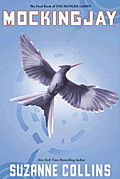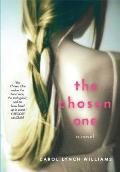 An e-audiobook from the library. (Ebooks I can probably take or leave, but e-audiobooks I love).
An e-audiobook from the library. (Ebooks I can probably take or leave, but e-audiobooks I love). The Chosen One is a work of contemporary fiction aimed at the young adult-audience. Set in a polygamist community and dealing with the abuse and abuse of power rampant within it, The Chosen One reads like a made-for-TV movie.
A bookmobile features prominently in the story. However the novel's 13-year-old narrator and protagonist insisted on referring to it nine times out of ten as "the Ironton County Mobile Library on Wheels," which was endearing at first, but quickly became irritating.
Crossed by Ally Condie
 I read, but never posted about Matched, the book to which Crossed is a sequel. I hadn't planned to read Matched, one of 2010's mass of dystopian YA releases, after reading another to those releases (Delirium by Lauren Oliver, see post) that featured a society with Society-determined marriages, but it happened to be available for download on a day that I was browsing the library's e-audio offering so I checked it out. Since most of my preference predictions about that crop of books were wrong,1 it should come as no surprise that I liked Matched.
I read, but never posted about Matched, the book to which Crossed is a sequel. I hadn't planned to read Matched, one of 2010's mass of dystopian YA releases, after reading another to those releases (Delirium by Lauren Oliver, see post) that featured a society with Society-determined marriages, but it happened to be available for download on a day that I was browsing the library's e-audio offering so I checked it out. Since most of my preference predictions about that crop of books were wrong,1 it should come as no surprise that I liked Matched.
The authoritarian society depicted in both Matched and Crossed is more complex than those in some of the other dystopian releases (yeah!), much more so that I expected, and its depth is revealed slowly to both protagonist and reader. The series also features a group of individuals referred to as the Archivists (expect a post on that in the near future).
I didn't enjoy Crossed as much as Matched, but considering that Crossed is the second book in a planned trilogy that's almost to be expected.
A History of Venice by John Julius Norwich
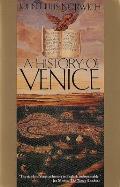 Russell came back from the library one day and said that he'd seen a book he thought I might like, a history of Venice, but that he hadn't picked it up for me since he wasn't sure what my reading schedule looked like. My reading schedule, such as it is, is nothing but flexible and I love variety so I asked him to bring the book home next time he went to the library.
Russell came back from the library one day and said that he'd seen a book he thought I might like, a history of Venice, but that he hadn't picked it up for me since he wasn't sure what my reading schedule looked like. My reading schedule, such as it is, is nothing but flexible and I love variety so I asked him to bring the book home next time he went to the library.
I have to admit that I was overwhelmed when he presented me with John Julius Norwich's 736-page A History of Venice: so fat, such fine print. Norwich starts with early settlements in the general area of the Venetian Republic (late Roman period) and follows through until Napoleon conquers the Republic. I think that I made it through the introduction and four chapters before we had to return the book or suffer over-due fees. I'm not sure that I'll check it out again, though. I suspect that there is another Venetian history out there that would be a better fit for me. From other reviews I've read it seems like Norwich continues to focus on political and military chronology while generally neglecting all the other (in my opinion) more interesting aspects of the Republic's history.


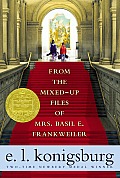 Claudia knew that she could never pull off the old-fashioned kind of running away...so she decided not to run FROM somewhere, but TO somewhere. And so, after some careful planning, she and her younger brother, Jamie, escaped — right into a mystery that made headlines!
Claudia knew that she could never pull off the old-fashioned kind of running away...so she decided not to run FROM somewhere, but TO somewhere. And so, after some careful planning, she and her younger brother, Jamie, escaped — right into a mystery that made headlines!
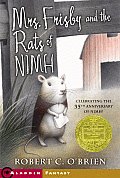 Mrs. Frisby, a widowed mouse with four small children, is faced with a terrible problem. She must move her family to their summer quarters immediately, or face almost certain death. But her youngest son, Timothy, lies ill with pneumonia and must not be moved. Fortunately, she encounters the rats of NIMH, an extraordinary breed of highly intelligent creatures, who come up with a brilliant solution to her dilemma.
Mrs. Frisby, a widowed mouse with four small children, is faced with a terrible problem. She must move her family to their summer quarters immediately, or face almost certain death. But her youngest son, Timothy, lies ill with pneumonia and must not be moved. Fortunately, she encounters the rats of NIMH, an extraordinary breed of highly intelligent creatures, who come up with a brilliant solution to her dilemma.
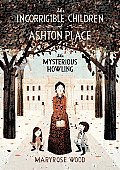 The first book in the Incorrigble Children of Ashton Place series.
The first book in the Incorrigble Children of Ashton Place series.  Rose is one of three daughters of a rich merchant who always brings gifts for his girls from the market. One day Rose asks for the seed of a blue bean, but he fails to find one for her. She lets out a sigh in resignation, and her sigh attracts the Sigh, a mysterious being that brings the seed she desired to the merchant. But every debt has to be paid, and every gift has a price, and the Sigh returns a year later to take the merchants daughter to a secret and distant palace.
Rose is one of three daughters of a rich merchant who always brings gifts for his girls from the market. One day Rose asks for the seed of a blue bean, but he fails to find one for her. She lets out a sigh in resignation, and her sigh attracts the Sigh, a mysterious being that brings the seed she desired to the merchant. But every debt has to be paid, and every gift has a price, and the Sigh returns a year later to take the merchants daughter to a secret and distant palace.
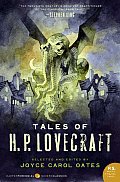 Even though I'm not supposed to be buying books for myself, I did pick up one during this latest blog-neglecting period. When I was book shopping for my nieces and nephews (a post on that topic coming soon) I happened across this deeply discounted title:
Even though I'm not supposed to be buying books for myself, I did pick up one during this latest blog-neglecting period. When I was book shopping for my nieces and nephews (a post on that topic coming soon) I happened across this deeply discounted title: 

